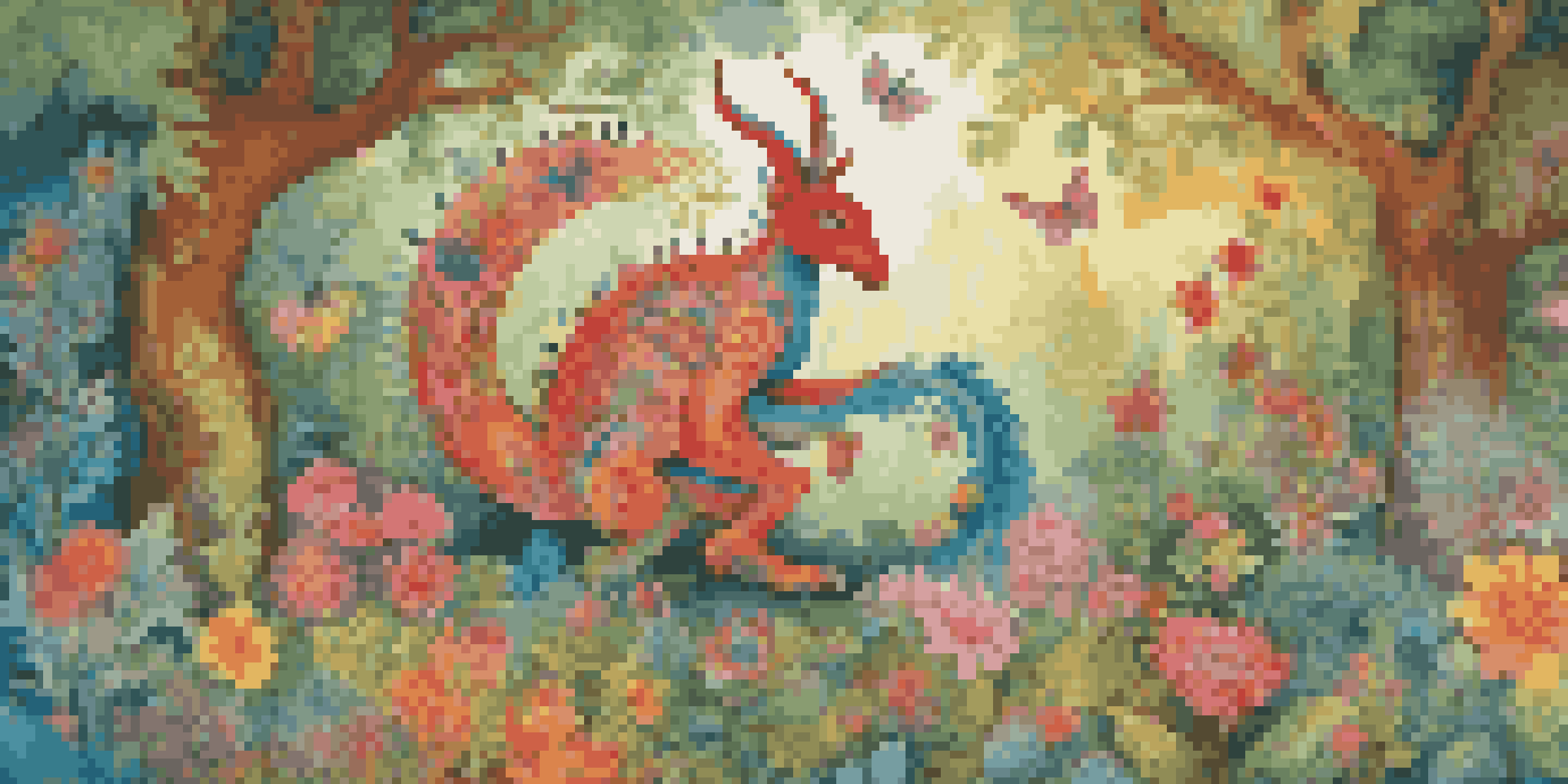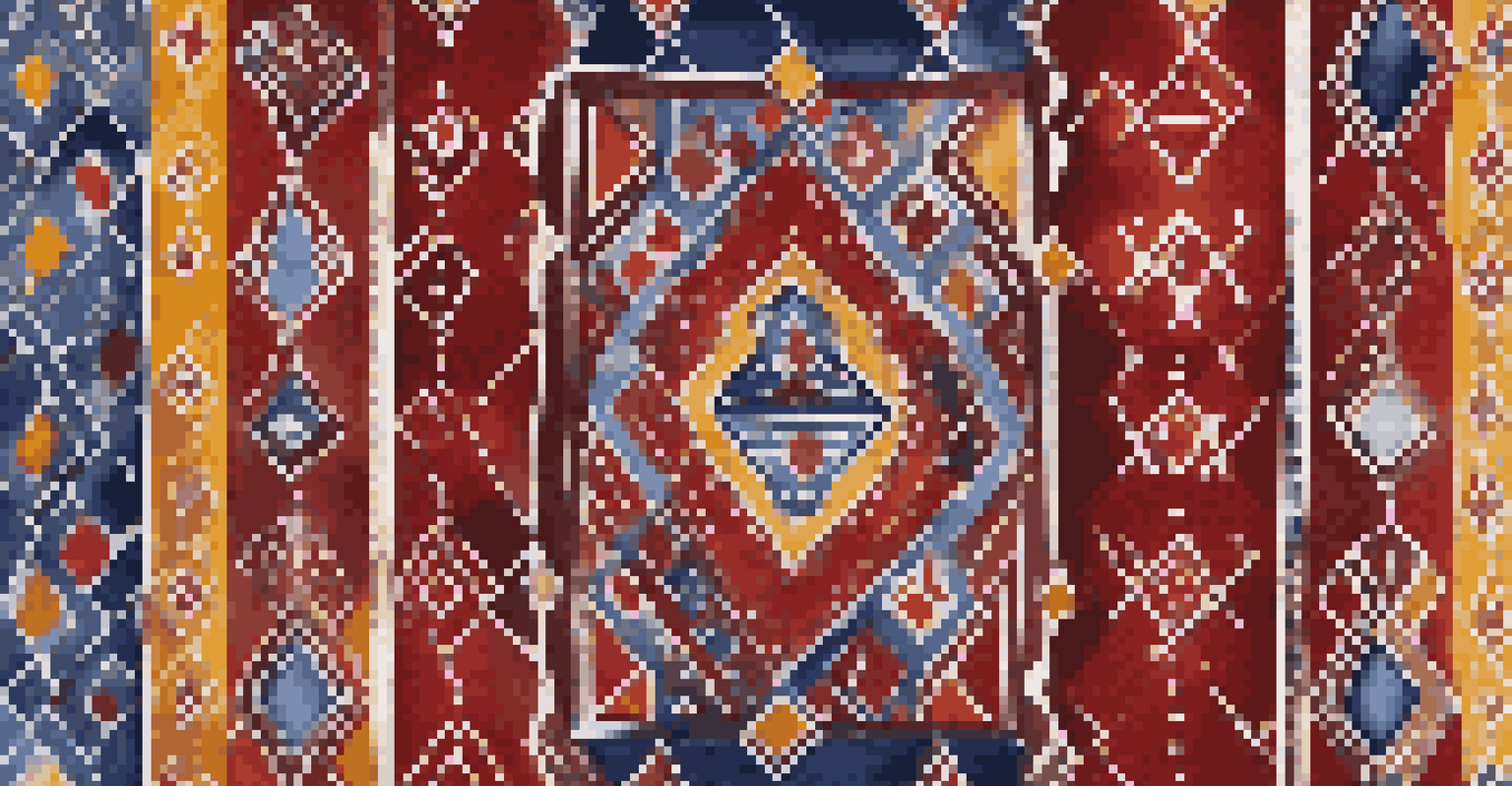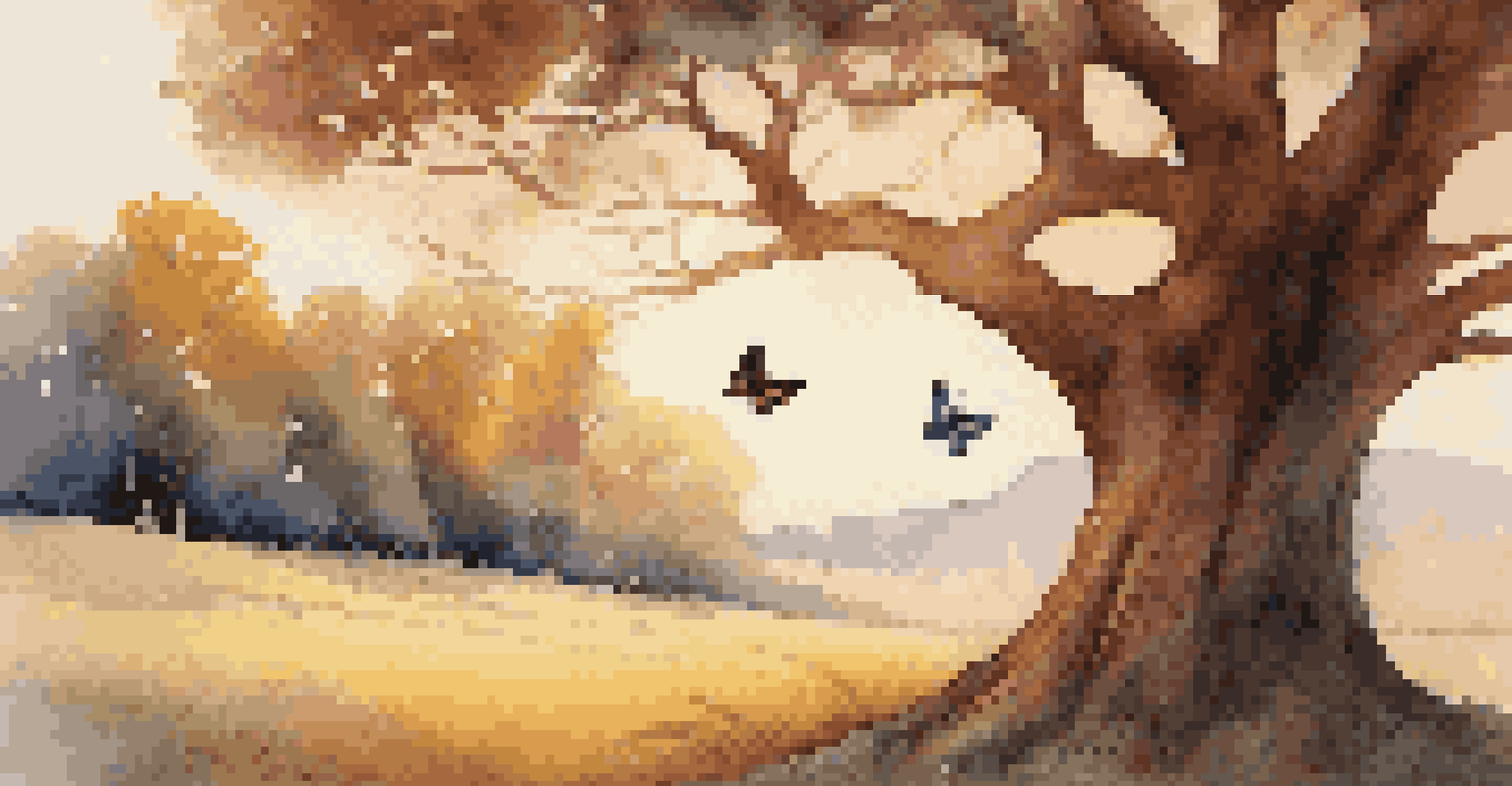The Aesthetics of Folklore: Visual Elements in Artistic Work

Understanding Folklore and Its Artistic Significance
Folklore encompasses the stories, traditions, and beliefs passed down through generations. It serves as a cultural reservoir, reflecting the values and experiences of a community. In artistic work, folklore provides a rich tapestry of imagery and symbolism that artists can draw upon to convey deeper meanings.
Folklore is the heart of a culture, giving voice to its values, beliefs, and traditions.
By integrating folklore into their art, creators can connect with audiences on a personal level, evoking nostalgia and shared cultural experiences. This connection can be particularly powerful, as it transforms simple visuals into narratives that resonate with viewers. Ultimately, folklore acts as a bridge between the past and present, enriching contemporary artistic expressions.
Moreover, the aesthetics of folklore often involve vibrant colors, intricate patterns, and dynamic forms that captivate the eye. These elements not only engage the viewer but also invite them to explore the stories behind the art. When artists embrace folklore, they celebrate their heritage while also fostering a sense of continuity in their work.
Symbolism in Folklore: A Window to Cultural Narratives
Symbols play a crucial role in folklore, acting as visual shorthand for complex ideas and emotions. For example, a butterfly might symbolize transformation, while a tree can represent strength and stability. Artists often incorporate these symbols into their work, allowing viewers to decipher meanings that go beyond the surface.

These symbols can vary widely across cultures, making them a fascinating subject for exploration. An artist might blend symbols from different traditions, creating a unique narrative that reflects a multicultural perspective. This blending not only enriches the artwork but also promotes dialogue about cultural exchange and understanding.
Folklore Enriches Artistic Expression
Integrating folklore into art creates a deep connection with audiences, transforming visuals into narratives that resonate with shared cultural experiences.
As viewers engage with these symbolic elements, they are invited to partake in a collective storytelling experience. The visual language of folklore encourages them to explore their interpretations while also appreciating the artist's intent. In this way, symbolism becomes a powerful tool for connection, bridging gaps between diverse cultures and experiences.
Color Palettes in Folklore Art: Creating Emotional Impact
Color is one of the most striking elements of folklore-inspired art, often chosen for its emotional resonance. Bright, saturated colors can evoke feelings of joy and vitality, while muted tones might convey nostalgia or melancholy. Artists utilize color palettes to enhance the storytelling aspect of their work, guiding the viewer's emotional journey.
Art is the most beautiful of all lies; it is the fabric of our existence woven with the threads of our stories.
Different cultures have various associations with colors, adding another layer of depth to the artwork. For instance, in some traditions, red signifies good luck and prosperity, while in others, it may symbolize danger or sacrifice. By understanding these cultural meanings, artists can intentionally select colors that align with their narrative goals, creating more impactful pieces.
Additionally, the use of color in folklore art often reflects the natural environment, drawing inspiration from landscapes, flora, and fauna. This connection to nature not only enhances the visual appeal but also reinforces the themes present in folklore. In this way, color becomes a vital tool for artists, enabling them to create immersive experiences that resonate with audiences.
Patterns and Textures: The Fabric of Folklore Aesthetics
Patterns and textures are integral to the aesthetics of folklore art, often derived from traditional crafts such as weaving, pottery, and embroidery. These elements add visual interest and depth, inviting viewers to explore the intricacies of the artwork. Each pattern carries its own significance, often telling a story or conveying cultural beliefs.
Incorporating these patterns into modern artistic work can create a dialogue between the past and present. For example, contemporary artists may use traditional motifs in innovative ways, reinterpreting them for today's audience. This fusion not only honors the original craftsmanship but also breathes new life into age-old traditions.
Symbols Bridge Cultural Narratives
Symbolism in folklore art serves as a visual shorthand, allowing artists to convey complex ideas and invite viewers to engage in a collective storytelling experience.
Textures, whether smooth or rough, play a crucial role in evoking sensory experiences. They can create a sense of touch that draws viewers closer, encouraging them to engage with the artwork on a deeper level. Ultimately, the combination of patterns and textures enriches the visual narrative, making folklore art a multi-dimensional experience.
Narrative Techniques: Storytelling Through Visual Art
At the heart of folklore art lies storytelling, where visual elements serve as characters, settings, and plots. Artists often employ narrative techniques to guide viewers through a visual journey, weaving together imagery that unfolds like a story. This storytelling aspect is what makes folklore art resonate so deeply with audiences, as it taps into universal human experiences.
For instance, a painting might depict a mythical creature that embodies a moral lesson, while a sculpture could represent a pivotal moment in a community's history. By utilizing these narrative techniques, artists can evoke emotions and provoke thought, inviting viewers to reflect on their own lives and experiences.
Moreover, the interplay of light and shadow can enhance the narrative quality of artwork, creating drama and tension. Artists may use these elements strategically to draw attention to specific aspects of their story, further enriching the viewer's engagement. In this way, folklore art becomes a dynamic narrative medium, capable of conveying complex ideas with simplicity and elegance.
Cultural Preservation: Folklore as a Living Art Form
Folklore is not merely a relic of the past; it is a living art form that evolves with each generation. Artists who engage with folklore contribute to its preservation, ensuring that stories and traditions remain vibrant and relevant. This ongoing dialogue between past and present allows cultures to adapt while maintaining their unique identities.
By incorporating elements of folklore into their work, contemporary artists create a bridge to history, sharing stories that might otherwise be forgotten. This act of preservation fosters a sense of belonging and continuity, reminding audiences of their roots while encouraging them to embrace change.
Color and Patterns Enhance Emotion
The use of color palettes and patterns in folklore art not only captivates viewers but also evokes emotional responses, reinforcing the stories behind the artwork.
Additionally, as artists reinterpret folklore for modern contexts, they invite new interpretations and discussions. This process not only enriches the cultural tapestry but also inspires future generations to explore their heritage through artistic expression. Thus, folklore remains a dynamic and essential part of cultural identity.
Conclusion: The Enduring Allure of Folklore in Art
The aesthetics of folklore in artistic work reveal the profound impact of culture on creativity. Through color, symbolism, patterns, and storytelling, artists are able to convey rich narratives that resonate across time and space. This connection to folklore not only enriches the artistic experience but also fosters a sense of community and shared heritage.
As we explore the visual elements of folklore, we uncover layers of meaning that invite us to reflect on our own stories and identities. Art becomes a medium through which we can celebrate our differences while recognizing the common threads that unite us. In a world increasingly shaped by globalization, folklore serves as a reminder of the beauty found in cultural diversity.

Ultimately, the enduring allure of folklore in art lies in its ability to inspire, provoke, and connect. By engaging with these visual elements, we not only appreciate the artistry but also honor the stories that shape our lives. As we move forward, let us continue to celebrate the vibrant aesthetics of folklore, ensuring that these rich narratives thrive for generations to come.